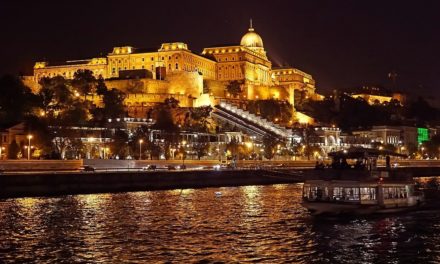"A nation that does not know its past does not understand its present, and cannot create its future!"
Europe needs Hungary and Poland...which have never let themselves be defeated.
We cannot strive for completeness in the field of Hungarian-Polish relations, because that would require the length of an entire book. Even so, we have to devote several pages to this part, so we have divided it into two parts. In the daily news, especially in relation to the European role of the V4, it is often said that Hungary and Poland "stand out" from the mainstream of European political life, which is said to be unified - but by no means so. If this is so, and this is the reality, there must be a reason for it. A young person today was born into the political, cultural and historical reality of the past three decades. For him, moreover, if he only relies on the often one-sided news sources of the Internet, it might even be annoying why his own nation and its leaders - be it Hungarian or Polish - oppose the objectives of the "developed West". The Eastern Europeans who lived through the "regime change" of 1989-1990 at a young age /myself, the author is one of these young people/ viewed the social organization and lifestyle of the prosperous countries to the west of us with high expectations and longing for a better life.

The young people of that time - now mostly grandparents and pensioners - are very disappointed. The citizens of two countries in particular, Hungary and Poland, show this feeling of disappointment in life in the bravest and loudest way. One source of this courage is the knowledge that if we haven't let each other down for a thousand years, we won't let each other down now either. (Let's just recall the event described in the Mongolian expedition chapter, during which Batu Khan first attacked the Poles and only then attacked his original target, the Kingdom of Hungary. Because he was afraid that the Poles would help Béla IV's country. The 20th century let's just refer to similar events, since the chapter will give an account of them. General Pilsudski was entrusted with the command of the Polish troops after the Great War. When, during the Polish-Soviet War of 1919-1921, the Soviet-Russian invasion of Poland led by Lenin the Poles were supported only by Hungary. When Hitler and Stalin almost destroyed Poland during the Second World War, only Hungary provided help and shelter to the fleeing Poles. And the roots of the Hungarian revolution of 1956 started from the events of the Polish uprising in Poznań.
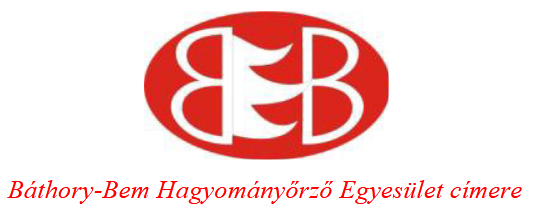
One of the most active and effective teams of Hungarian-Polish and, let's add, Transylvanian cooperation and friendship, was created on the initiative of Márton Okos, who is from Kalotaszeg. When, in 1989, Márton Okos and Gábor Juhos took the "Complaint of the Hungarians living in Transylvania" to Paris on foot, it was such a large-scale undertaking that several initiatives grew out of it. The almost 1,500 km traveled on foot naturally also expressed Trianon's blood-boiling unjust decision. In 2017, Márton Okos had a lion's share in announcing and organizing the Memorial Year of Saint László Then in 2019, he initiated the holding of the Bocska Memorial Year. Many times II. , founded by Márton Okos, continuously pays tribute to the historical role of Ferenc Rákóczi, István Báthory, and József Bem, and fortunately to the inexhaustible memory of many Polish and Hungarian patriots. In 2021, we can witness and take part in the events of the Báthory Memorial Year.
Before discussing Hungarian-Polish relations, it is "obligatory" to mention the well-known saying, according to which "Poles and Hungarians are two good friends who fight together and drink wine." (Polak, wegier, dwa bratanki, i do szabli, i do szklanki.") The work erected in Győr is an unadulterated symbol of this friendship. The statue, which was inaugurated on March 24, 2006, and its many counterparts expressing similar symbols in the two countries, remind us that March 23 was declared the day of Hungarian-Polish friendship.

State-level cooperation is expressed by the Felczak Foundation, which was established in Krakow in 2016 at the suggestion of the Hungarian Prime Minister. Waclaw Felczak , as a result of the commemorative meeting entitled Central Europe - the fate of a region in the current of history, one institution was later established in Warsaw and Budapest. CLXVI of 2017 announced in the Hungarian Gazette. Act on Hungarian-Polish friendship, the preservation, presentation and development of cultural and historical heritage, as well as tenders for the support of young professionals. The Warsaw Sejm passed a similar law in 2018.

One of the results of this was the large-scale Hungarian-Polish historians' conference entitled "The Web of Relations", which was organized in the hall of the Hungarian Academy of Sciences in October 2019. In the 12 sections, 48 lectures were given on the events of the common history from the 10th century to the present day.
Speaking of Hungarian-Polish relations, we cannot ignore the name and activities of Konrad Sutarski The author who founded the museum, published dozens of books, and "knows two countries as his own", reveals the common past of the Hungarian and Polish people and the important points of connection.
It should be mentioned that the name Polish is used only by us Hungarians, because in all other languages the name of the country is written and pronounced as Polonia. (Men are called Polak, women are called Polka.) The cradle of the Polish state is the region of Gniezno and Poznan, where the Poles lived. The area of Kraków was inhabited by the Vislans. In the region of Halics, Ladomér and Przemysl, the conquering Hungarians got to know the people who made up the country, and they were the Lenzians. In the Hungarian language, this national name, "Polengyel", has remained.

Today, more than ten thousand Poles live in Hungary. However, according to the census data, only nearly 3,000 people identified themselves as Poles. The importance and activities of the small diaspora go far beyond their size.
The Árpád era
The beginning of the relationship between the two peoples can be traced back to the meeting of the Árpáds and the Piasts . The intertwining of the families of the two dynasties already of Prince Géza , when he married Adelajda , the daughter of the Polish prince. The family ties were further strengthened by the fact that Boleszláv Vitéz married Judith - King Szent István's sister Prince Bezprym was born from this marriage , who found refuge from the Polish civil strife under István's protection. He received an estate on the northern shore of Lake Balaton from the Hungarian king, and it can be assumed that the Polish prince was the namesake of Veszprém Castle.
Adalbert , who came to Hungary in 955 . The Archbishop's Cathedral in Esztergom was consecrated in honor of St. Adalbert in the same way as the Polish Archbishopric of Gniezno. In 997, Adalbert went to Poland with his younger brother, where he continued his proselytizing activities. However, the Prussians living in the Vistula estuary murdered them. Adalbert is also revered by Poles as a national saint.
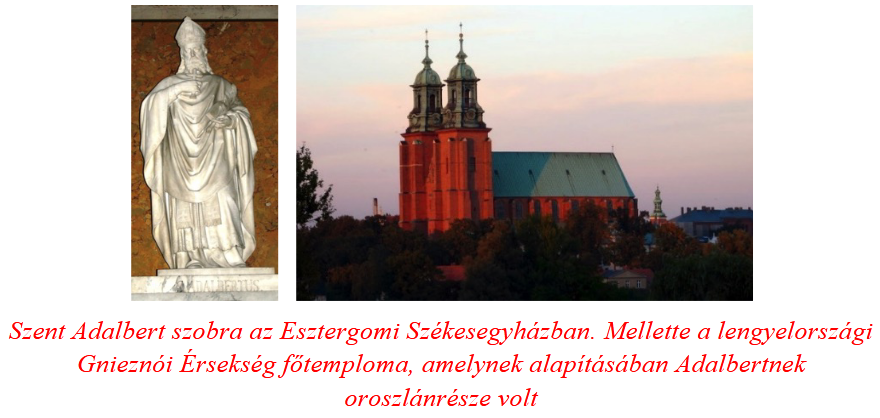
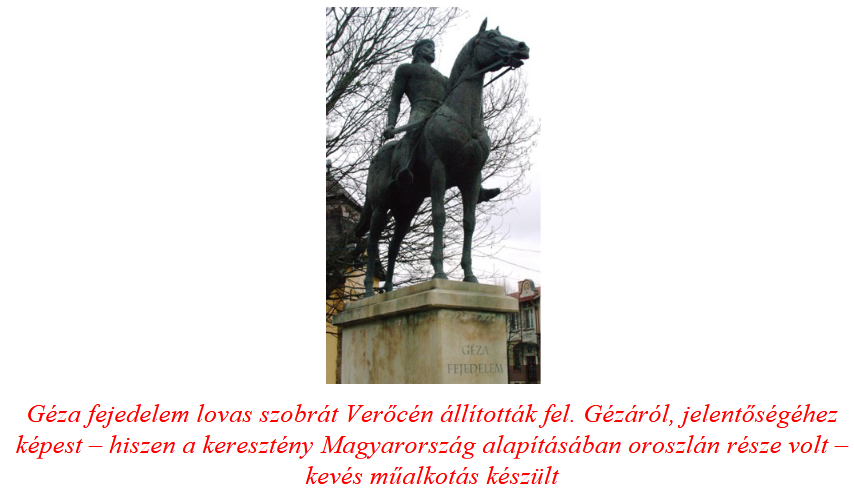 The good relations between the two peoples cannot be explained only by rational arguments and specific historical events. After all, when the crown he made for the Poles II. Pope Szilveszter sent it to the Hungarians - it is true, thanks to a dream - which caused resentment on the part of the Poles. The two peoples have a world of character that cannot be explained with rational arguments. For example, the love of the horse, the way they dressed, the use of the saber, the decorative arts, the development of the common nobility, the love of country and freedom, the sense of kinship felt towards others, and the constant fight against the great powers pressing in from both sides. There is no other like it in Europe. (We talk less about it, but Prince Imre also married a Polish princess.)
The good relations between the two peoples cannot be explained only by rational arguments and specific historical events. After all, when the crown he made for the Poles II. Pope Szilveszter sent it to the Hungarians - it is true, thanks to a dream - which caused resentment on the part of the Poles. The two peoples have a world of character that cannot be explained with rational arguments. For example, the love of the horse, the way they dressed, the use of the saber, the decorative arts, the development of the common nobility, the love of country and freedom, the sense of kinship felt towards others, and the constant fight against the great powers pressing in from both sides. There is no other like it in Europe. (We talk less about it, but Prince Imre also married a Polish princess.)
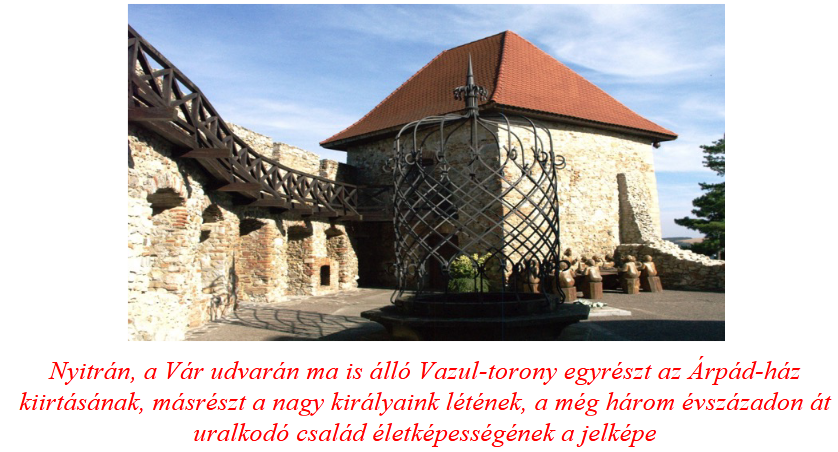
When King István was almost terminally ill, in 1037 he still had enough strength and power to Vazul's three sons - whom the German (Bavarian) environment wanted to destroy - from the country. András, Béla and Levente found protection on Polish soil, the importance of which cannot be overemphasized, since the Árpád house would have died out with them. In 1046, Prince András defeated Peter , and thanks to this help he was able to occupy the Hungarian throne. András I (1046-1060) became a hotbed of further throne disputes. After all, he did not stand by the rebellion led by Vata, who helped him to the throne, but his first task was to put it down. Later, contrary to his promise, he left the throne not to his younger brother Béla, but to his son Salamon .
 Prince Béla, another son of Vazul, who also fled to Poland, married II. Mieszko (1025-1031) Polish ruler's daughter Richeza . Seven children - three boys and four girls - were born from the marriage. Among them, Géza was the first born, who rightfully earned the epithet "Magnus" due to his physical and mental qualities. Fortunately for the Hungarians, after the early death of King Géza (1074-1077), László came to the Hungarian throne.
Prince Béla, another son of Vazul, who also fled to Poland, married II. Mieszko (1025-1031) Polish ruler's daughter Richeza . Seven children - three boys and four girls - were born from the marriage. Among them, Géza was the first born, who rightfully earned the epithet "Magnus" due to his physical and mental qualities. Fortunately for the Hungarians, after the early death of King Géza (1074-1077), László came to the Hungarian throne.

Saint László (1077-1095), who influenced the moral, ecclesiastical and military defense of the nation until the 20th century Just as the Hungarians had previously driven out Peter of Venice with Polish help, in 1074 Géza and László also won with Polish military support over Solomon's Hungarian-German army at Mogyoród. He made King László the patron saint not only of Transylvania and Hungary, but also of Poland. Szent László's 1092 campaign against Halics and the Russians was successful, but the following year he drifted into the Polish civil strife. One of these events, recorded by the Képes chronicle, was the siege of Kraków.

In Pest, on the 15th of Március Square, next to the Main Parish of Our Lady, there is St. Kinga . The white limestone statue IV. It portrays the daughter of King Béla, the patron saint of Poland. King Boleslav V of Poland, Kinga served the Polish and Hungarian people and relations throughout her life. He especially distinguished himself by supporting the poor and the church.

According to a legend, when Kinga visited home, accompanied by his father, he visited the salt mines in Maramaros. He asked the king to give him a salt mine as a gift so that he could take a block of salt with him to Kraków. ARC. Béla fulfilled her daughter's request. In Aknaszlatina, the salt mine that Kinga received as a gift is still called the Kinga-tárna. As a sign of taking possession of the mine, Kinga took off his wedding ring and threw it into the mine. Later, when the Wieliczka salt mine was opened near Kraków, Kinga's (as the Poles call it Kunigunda ) ring was found in one of the mined blocks of salt.
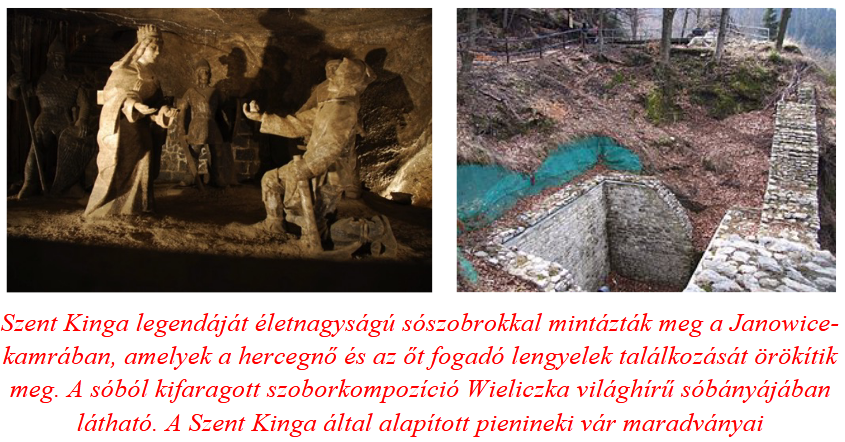
During the Mongol visit, which was mentioned earlier, the Polish royal couple - Boleszláv V and Kinga - fled to Podolin in Szepiszé and then to Csorsztin Castle on the banks of the Dunajec River. The series of Polish-Hungarian marriages did not end with Kinga. Blessed Jolánta , IV. Béla's other daughter became the wife of the Duke of Kujavia, Boleslav Jámbor. (Kujávia lies west of the Vistula, in the territory of Central Poland.) The princes, IV. Béla's sons-in-law provided significant help to the Hungarian king during the Second In the battles against King Ottokar of Bohemia.
The Age of Anjou
Caroberto , from the Neapolitan branch of the House of Anjou, supported by the Pope, emerged victorious in the fight for the Hungarian throne. Also recorded as Róbert Károly, Károly I (1308-1342) ascended the Hungarian throne. Previously, the country that had fallen into chaos due to the dispute over the throne was successfully put in order by the King of Anjou in a few years. When Róbert Károly created the "treasured Hungary", he put it on strong economic foundations and organized a new type of army to defend it. He had problems, his opposition was much stronger at the end of the Árpád era with the petty kings, which was ended by the battle of Rozgony in 1312. Károly I, if not definitively, settled the barons. In particular, the relegation of the Csák clan to the background created the opportunity to create the unity of the country.

From the point of view of our topic, the foreign policy of the Hungarian king is primarily interesting. In 1335, Károly I invited him to Visegrád III. Kázmér the Polish and János the Czech. Already in 1320, Károly Anjou married Erzsébet Lokiet , of King Ulászló, . Róbert Károly provided significant help to his father-in-law in the unification of the country. Among the treaties concluded in Visegrád, beneficial for the Hungarians, was that if Kázmér died without a son, the Polish throne could be occupied by the Hungarian king or his successor.
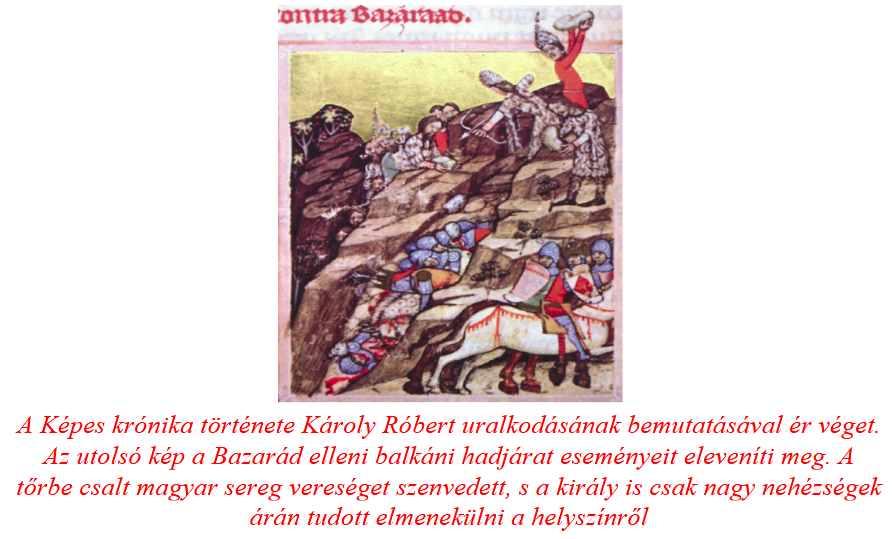
(The meeting of kings in Visegrád convened in 1335 is still of great importance, as the idea and name of the political grouping of the so-called V4 owes its existence to it. Based on the personalities of the participants - including the Anjou from Naples - and the geographical conditions, it could even be the V5, if Italy would join.)
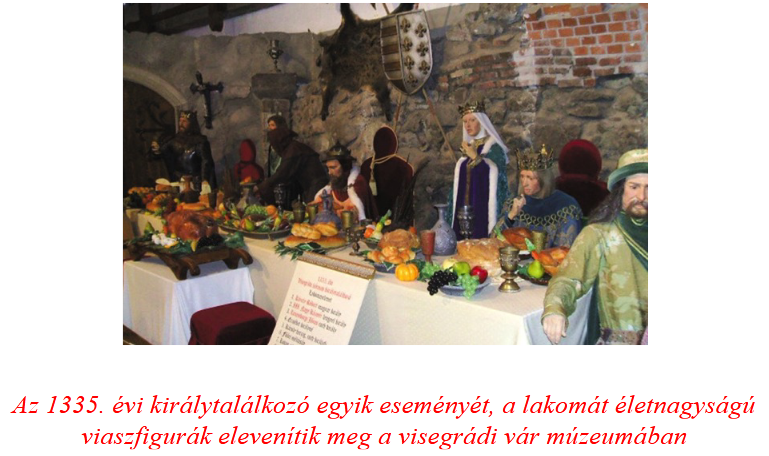
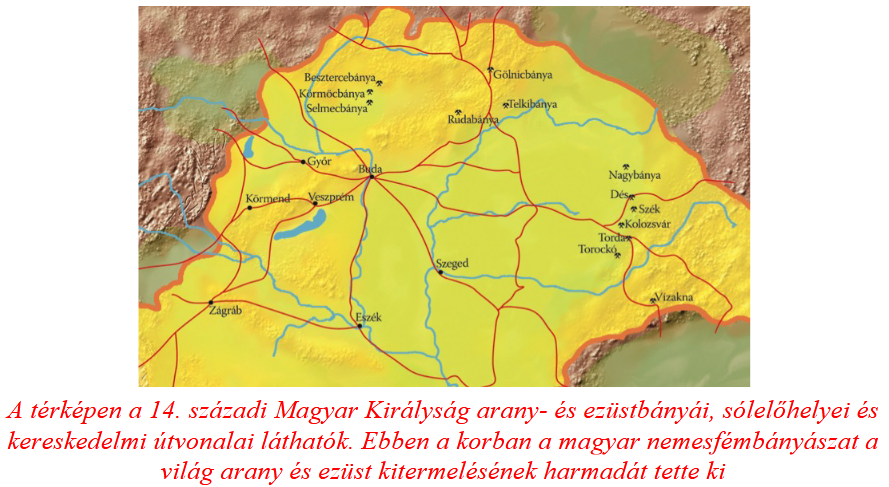
The attachment of the Anjou kings to the Poles and the spectacular strengthening of Polish-Hungarian relations are attributed to Louis the Great In the person of the "foreign Hungarian", the kinship-friendship bond, as we experienced with Szent László, was repeated on several lines. On the one hand, it can be said about Lajos Nagy after his mother that his mother tongue was also Polish. On the other hand, the role model of King Louis in almost all his actions was King Saint László. This can be said about the age of chivalry, since we could not talk about it in László's time, but the deeds of the holy king, his moral, religious, and military achievements created a living example for King Louis. (For the sake of completeness, let us note that although Louis the Great played a prominent role in following King László, Róbert Károly and later Zsigmond of Luxemburg also considered Saint László as his role model.)
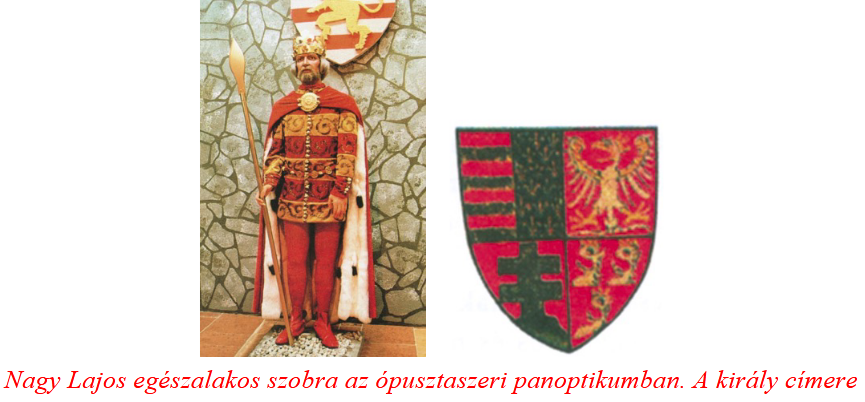
King Louis the Great (1370-1382) of Poland paid great attention to the development of cultural relations during the years of the Hungarian-Polish personal union.
The Italian masters who came to Buda, especially the goldsmiths, also worked in the Cracow court.

Cultural relations further strengthened when III. (Nagy) Kázmér founded a university in Krakow, which Hungarian students also frequently visited.
Relations between the organizations of the Christian Church were of great importance, among which the role of the Pauline Order stands out. The Hungarian-founded monastic order set foot outside of Hungary only in Poland, when in 1380 some Pauline monks founded the monastery in Jasna Góra. The organization of the Paulists grew stronger in Poland and weakened in Hungary over the centuries. This is how it happened that in 1934 sixteen Pauline monks came from Czestochowa to our country to restore the activity of the order for the sake of Christianity.)

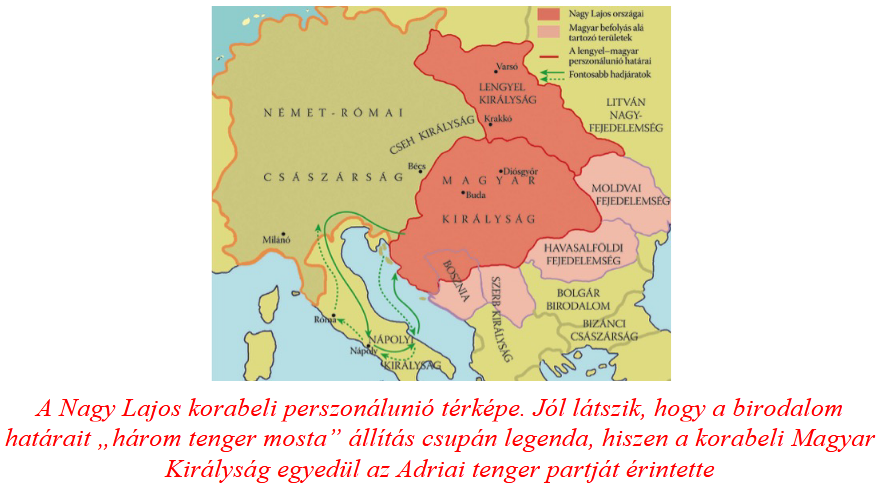
When Louis the Great became the king of Poland, Diósgyőr was built as one of the centers of the Kingdom of Hungary, which was "halfway" between Buda and Krakow. The Hungarian king set foot in Dalmatia as well, which the Republic of Calabria, Venice, did not take kindly to. The rich trading city launched an attack on Hungary in 1372, but Louis the Great defended his country. The "Christian" Venice did not shy away from entering into an alliance with the Turks against the Hungarians. When this did not lead to results either, the last solution remained, the one they knew best, poison. The Venetian Privy Council commissioned a Venetian nobleman named Julian Baldachini The rise of Louis the Great in Central Europe was not viewed favorably by the princes of the Western powers, so the death of the great king was not a great grief for them.
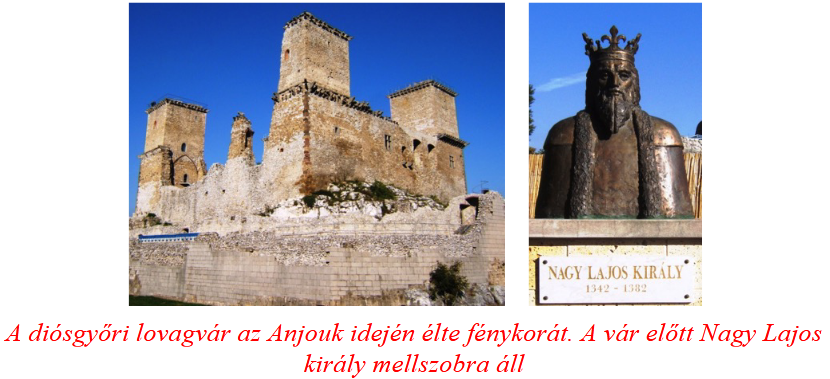
It should be known that the small churches built in the time of Saint László survived and were renovated in such a way that they were saved for posterity by the master builders of Lajos Nagy. And it is even more worth knowing that most of the houses of God, on the wall of which the scene of the rescue of the girls from Kerles (Cerhalm) can be seen, were built in the Anjou period. Prince László, because he was not yet king, built his reputation, name and great popularity on the battle of Cserhalm. Most of the frescoes were placed on the walls of churches in the 14th century - thanks to Louis the Great.
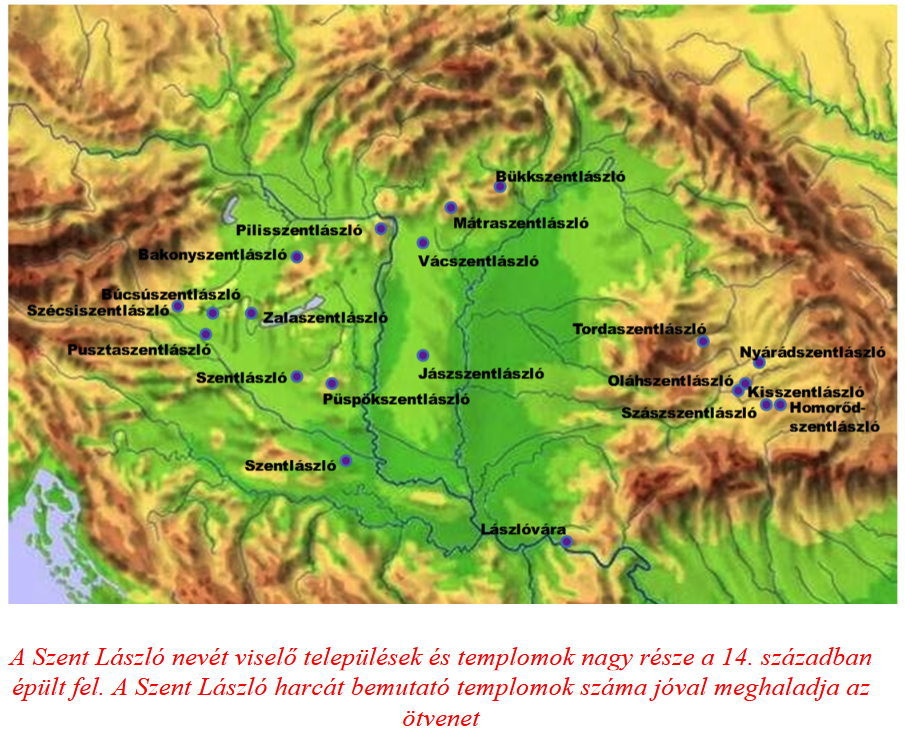
King Louis the Great's veneration of László, which spanned almost all of Europe, took shape Saint Hedvig When Louis died in 1382 and had no son, Hedwig inherited the Polish throne. Ulászló Lokietek (Kis) Jagielló (1377-1381) was a contemporary of King Louis and the founder of the Polish-Lithuanian dynasty. At the end of his life, the Lithuanian Grand Duke built the first László chapel in Vilnius. Through Lajos the Great and his daughter Hedvig, who was still a "pagan" ruler at the time, he asked for the heavenly patronage of Saint László so that the Lithuanians could adopt Christianity. II. Ulászló Jagielló (1386-1434), who established the Polish-Lithuanian Union, married Hedvig, and together they created the largest Christian state in Europe. Hedwig, who Jadwiga (1384-1399), was venerated by Lithuanians as a saint after her death in early 1399. (However, he was only by Pope János Paul II in 1997.) The Jagiellonians took the name (U)lászló after the name of Saint László.
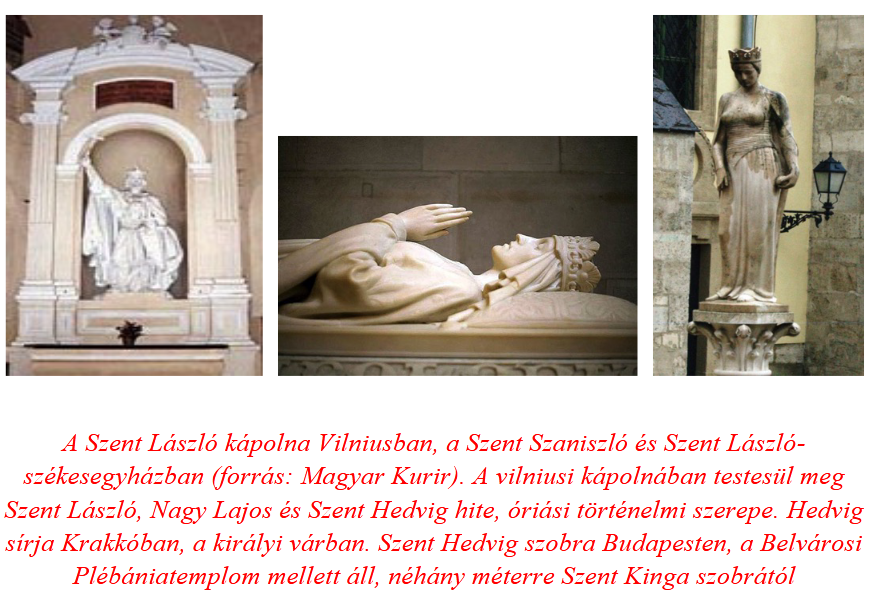
The Church of the Hungarian Saints. The church of the Kisárva settlement, which once belonged to historical Hungary, was built after 1650. The painted, coffered House of God is one of the most beautiful and colorful churches in the Carpathian Basin. The inhabitants of Kisárva, or Orawka in Polish, belonging to Poland since 1920, faithfully cherish the memory of the Hungarian saints. The Gorals living there still do not deny that their ancestors belonged to the Kingdom of Hungary. The approximately fifty Hungarian saints in such a small church do not occur anywhere else. St. John the Baptist, located in the northernmost settlement, is rightly called the "most Hungarian church".
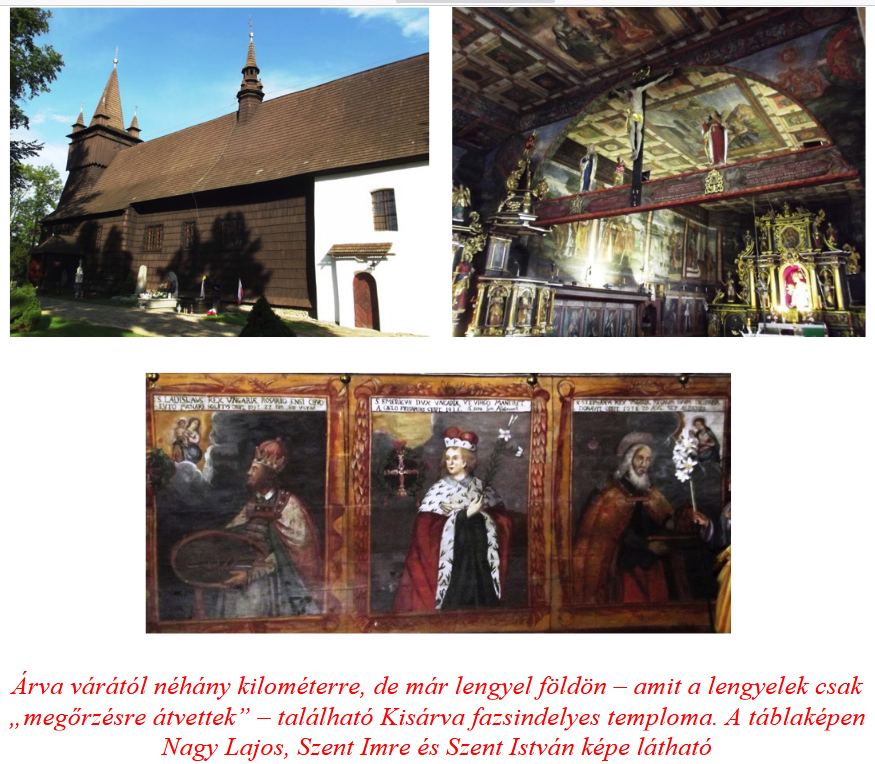
Author: Ferenc Bánhegyi
The parts published so far can be read here: 1., 2., 3., 4., 5., 6., 7., 8., 9., 10., 11., 12., 13., 14., 15., 16.
(Cover photo: MTI)




